Picking materials for your plumbing system is not easy. Typically, the first advanced plumbing technology students encounter are ABS and PVC pipes. Understanding the distinctions between these two options is essential to making the right decision suited to your needs. Whether you’re a contracting professional or a DIY plumbing enthusiast, this guide will help you distinguish between the two materials. We will analyze the pros and cons of both from the standpoint of shock and impact resistance, flexibility, cost, carbon footprint, and other factors to help you reach an educated decision for your next plumbing venture. Follow us closely, and we will tell you everything you need to know to make your perfect plumbing decision!
What are the Key Differences Between ABS and PVC?
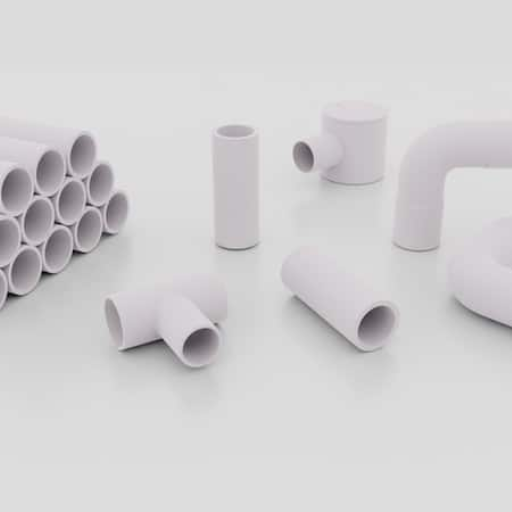
Key Differences Between ABS and PVC
- Material Composition
When comparing the two plastic materials, Polyvinyl Chloride (PVC) is softer and more flexible, while Acrylonitrile Butadiene Styrene (ABS) is characterized as tough, rigid and having a better impact resistance.
- Durability
For impact resistance, ABS is better, especially in cold weather. PVC captures better results when absorbing prolonged exposure to sunlight.
- Cost
Due to the high demand for AIR CONDITIONING work with great efficiency but low cost, ABS is widely used and is considered cheaper. PVC’s low price offer in the market does make it a good option.
- Joining Method
Unlike PVC, ABS pipes require a one-step solvent cement process and do not use additional components such as primers.
- Applications
Such an industry like construction, where goods are produced from synthetic materials, ABS is preferred for water drainage and air conditioning systems because of its strength, whereas PVC is widely used for external supply and discharge systems because of its light weight and ease of installation.
Every material possesses its own unique benefits, therefore, the best selection is dependent on the environment and purpose of your project.
Understanding ABS and PVC Plastic Composition
ABS and PVC have different costs and environmental considerations that stand out when put side by side. The materials and processes involved in producing ABS piping make it costlier than PVC. Easement-type projects located in regions with lower material availability have greater cost incentives than more basic projects. These differences might be less significant in smaller projects; however, making budget provisions early in the planning phase head.
Regarding the environment, each material poses specific challenges and consequences. In comparison to the durability and reduced replacement waste PVC leads to, its recyclability puts it as a clear winner. Its production of PVC, however, does pose issues such as containing chlorine, which poses risks during disposal alongside manufacturing. Contrary to this, ABS tends to be petroleum-based, meaning its production has lower energy costs. The problem with this is that ABS does not guarantee widespread recyclability like PVC does. This makes evaluating the end of life of the material particularly important. Through these factors, stakeholders can effectively fulfill their economic and sustainable green zones.
ABS vs PVC: Differences Between Strength and Durability
ABS and PVC have different costs and environmental considerations that stand out when put side by side. The materials and processes involved in producing ABS piping make it costlier than PVC. Easement-type projects located in regions with lower material availability have greater cost incentives than more basic projects. These differences might be less significant in smaller projects; however, making budget provisions early in the planning phase head.
Regarding the environment, each material poses specific challenges and consequences. In comparison to the durability and reduced replacement waste PVC leads to, its recyclability puts it as a clear winner. Its production of PVC, however, does pose issues such as containing chlorine, which poses risks during disposal alongside manufacturing. Contrary to this, ABS tends to be petroleum-based, meaning its production has lower energy costs. The problem with this is that ABS not guarantee widespread recyclability like PVC does. This makes evaluating the end of life of the material particularly important. Through these factors, stakeholders can effectively fulfill their economic and sustainable green zones.
Why ABS Plastic is Stronger Than PVC?
The use of ABS (Acrylonitrile Butadiene Styrene) plastic is considered to be stronger than that of PVC (Polyvinyl Chloride) because of the material composition and the mechanical properties of ABS thermoplastic polymers. ABS is engineered to have high impact resistance along with high toughness. It has a tensile strength between 5100 – 6100 psi, in comparison to PVC, which possesses a tensile strength of approximately 2500 – 4800 psi. The difference is substantially bigger with respect to the forces that can be absorbed without breaking. In addition, the resistance against crack formation on applying stress is higher when compared with other materials, which enhances its uses in automobile parts, consumer electronics, and other electronics.
The ability of a material to withstand extreme temperatures without losing structural integrity is another reason why ABS performs better than PVC. It can resist up to 221°F (105°C) while PVC softens around 140°F (60°C). This helps ABS to be used in areas that require resistive heat. In addition, its chemical structure makes it more resilient to abrasives and impact than PVC. Although PVC is known to be highly durable, it is rigid and becomes non-resilient under dynamic loads. This makes ABS preferred in environments that need strength and endurance, making it more suitable for infrastructure engineering.
Choosing ABS or PVC for Your Plumbing System
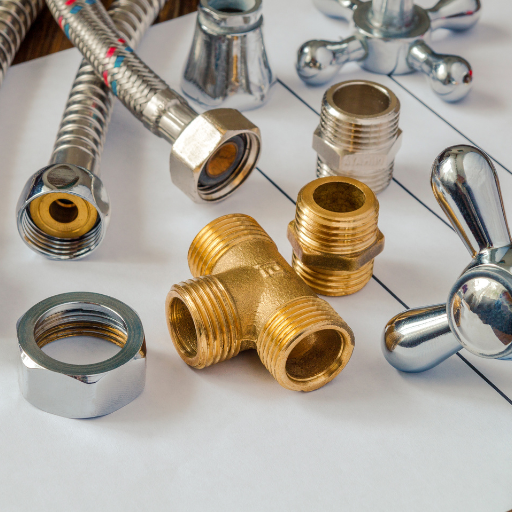
Selecting the right plumbing material often lies between ABS and PVC. Each material has its ideal environment and application. Because of its excellent impact strength, ABS is perfect for colder regions where temperatures drop below freezing and durability is critical. Conversely, PVC is better suited for areas where flexibility and chemical resistance are prioritized. For systems exposed to sunlight, ABS outshines PVC due to its UV resistance. PVC, on the other hand, will deteriorate over time if not properly sheltered.
When to Use ABS Pipe?
To meet some of the criteria, ABS (Acrylonitrile Butadiene Styrene pipes have unique characteristics that make them ideal for use in certain situations. They are a good option for use in the drainage, sanitary, and vent systems of plumbing in residential and commercial buildings. This is because ABS works perfectly in low-temperature settings, maintaining strength and flexibility in even the sub-zero range. Additionally, it is one of the most temperature-shock resistant thermoplastics, making it suitable for physically stressful/ cold regions.
Also, morphology of ABS pipes permit resistant action against industrial chemicals, making them suitable for industries where CORROSIVE materials eare ncountered. Pipes are lightweight and easy to install mechanically due to one-step solvent welding, which reduces labor time. Further research indicates that geometers made from the available ABS thermoplastic outperform some opponents in terms of durability, ensuring reliable use for decades if used properly.
One distinguishing feature is UV resistance. When sunlight is present, ABS performs better than PVC in maintaining structural integrity. This attribute enables it to be used outdoors, such as in vent stacks and exposed pipe applications, without the need for protective coatings and shielding. Altogether, these reasons make ABS pipe an optimal selection considering both strength and suppleness in numerous essential applications.
Benefits of PVC Pipe for Plumbing
As far as my experience goes, using PVC pipe for plumbing comes with a myriad of advantages. The pipe is very cost-effective, weighs little, and can be easily maneuvered, which simplifies DIY installation while also lowering the labor costs. It can resist corrosion and chemical damage, providing reliability for different types of water systems, as well as drainage systems. Furthermore, the adaptability of PVC makes it usable across various domains, be it residential, commercial, or industrial, making it an economical plumbing solution.
Factors to Consider When Choosing ABS or PVC
There are critical considerations that need to be made when choosing between ABS (Acrylonitrile Butadiene Styrene) or PVC (Polyvinyl Chloride) in relation to your plumbing or construction works.
1. Temperature Resistance: ABS grades are impact resistant at low temperatures, making them better for colder environments. Meanwhile, PVC is better suited for warmer environments subjected to higher temperatures.
2. Strength and Durability: ABS should be chosen for underground applications because it is comparatively stronger and more impact resistant. PVC is weaker in term of impact resistance, however, it’s more flexible which is useful in some installations.
3. Weight and Ease of Handling: Both materials are easy to install due to being lightweight. PVC does tend to more dense than ABS, adding some weight to the system, but enhancing noise insulation, especially in drainage pipes.
4. Cost: In regard to price differences in the materials, some areas may observe ABS being more pricey than PVC; however, the initial cost is sometimes offset by long-term benefits depending on the application under consideration.
5. Chemical Resistance: While both ABS and PVC are resistant to many chemicals, PVC has a wider range of compatibility. It is more commonly used in settings where exposure to harsh chemicals is likely because of its better resistance than ABS.
6. Longevity and Environmental Impact: PVC is more resistant to harsh environmental factors like UV light when compared to ABS. This increases its suitability for outdoor use. While both materials can be recycled, PVC is often preferred in projects focused on sustainability due to its recyclability.
Analyzing all these factors allows you to select appropriate material which not only meets the requirements of the project but also ensures long term durability and low maintenance costs.
How Do ABS and PVC Pipes Differ in Installation?
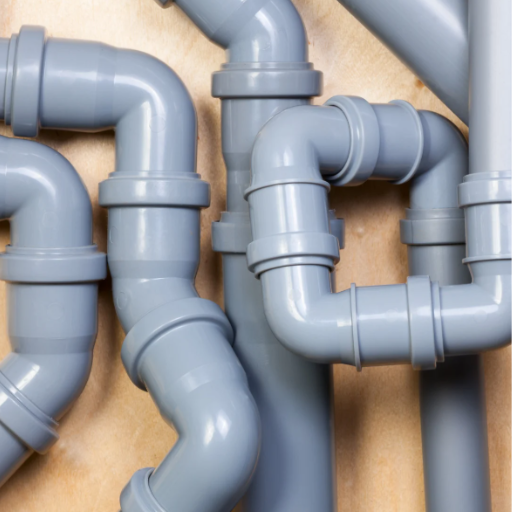
The lightweight ABS pipes ease handling and installation, particularly in cold conditions where PVC is prone to becoming brittle. Further, solvent cement can be applied without prior priming, expediting installation. In contrast, direct bonding for PVC pipes requires the use of primer, leading to an additional step. In terms of flexibility, PVC outperforms ABS making it suitable for complex and curved spaces but more straightforward layouts can make use of rigid ABS. Depending on the installation needs, these differences could determine the preferred material.
Using Special Cement for ABS and PVC Joints
Joining ABS and PVC pipes requires special transition cement purposed for both materials due to the unique chemical properties of both plastics, needing a blend designed specifically for them. Unlike standard cements, which act more like adhesives, transition cement forms a chemical weld joint between pipes, maintaining the integrity of the seal under various pressure and temperature conditions.
Plumbing codes in the region may restrict the use of ABS-to-PVC connections. Depending on the application, some restrictions prohibit or limit their use entirely. So is the case with their location in the system. Confirming compliance with local standards prior to proceeding is essential in avoiding potential dilemmas.
For transition cement, applications commence by scrubbing and prepping the pipe ends to the level where contaminants like dirt, grit, and other debris are completely clean. After the surfaces have been thoroughly cleaned, transition cement is spread uniformly onto both pipes before they are pressed together firmly. It’s best to let the system sit for an optimal period of time before testing the system under pressure; this ensures optimal results. Done correctly, the connections are capable of withstanding diverse plumbing systems for both residential and commercial use, providing strength and reliability over time.
Installation Tips for PVC and ABS Pipes
A PVC or ABS pipe installation will be the smoothest and most durable with the right preparation steps and techniques. Read below for some recommendations.
- Cutting and Measuring Accurately
To achieve a PVC or ABS pipe’s fit requirements, accurate measurements are a must. Obtaining square and smooth cuts requires a pipe cutting tool with fine teeth, or a bicycle style cutter, designed for plastic. Having polished or smooth edges prevents leaks that provide seamless connections.
- Choosing the Right Cement and Primer
The PVC or ABS pipe in question will determine the appropriate primer and solvent cement required. Primers are necessary in PVCs for softening purposes for better bonding, while ABS does not need primers but does require thick and evenly spread solvent cement. Check product labels regarding compatibility for additional requirements such as set or curing times.
- Temperature Considerations
Heat influences cement set time, pipe flexibility, and both setting and curing landmarks. Cold areas will benefit from low temperature rated cements that ensure bonds during use. While high temperatures dictate carefulness to prevent bending as they require greater time for testing without cuts.
- Support and Spacing for Pipes
Pipes aligned every so often add reliability while preventing drooping and dislocation, which may cause stress areas in your plumbing. Recommended support spacing is every 4 ft for 1 inch and covers 6 ft for 1.5 inches or larger. Proper pipe strap or screw hangers that allow for free movement during thermal expansion or contraction of the pipes should be used.
- Pressure Testing Considerations
To confirm the death of leaks after the installation process, pressure testing the plumbing confirms leak-free connections. Stepwise increase the pressure up to the specified limit, which should not exceed the pipe pressure rating as categorized by the manufacturer. Maintain pressure throughout a specific duration and support intervals along with joint inspection for weakness.
Adhering to the above tips will enhance the safety, efficiency and the strength in plumbing systems both commercial and residential. Long term performance along with eliminating unnecessary expense is attributed to good planning and precision.
Can You Connect ABS to PVC?
Yes, you are able to connect ABS (Acrylonitrile Butadiene Styrene) to PVC (Polyvinyl Chloride) under certain conditions, though specific methods must be followed in order to guarantee a proper mechanical and glued joint. In general, these two types of plastic are bonded by means of special cement intended for dissimilar materials. The cement serves to escalate the chemical bond between ABS and PVC materials, but it must be compliant with local plumbing codes; some jurisdictions do not allow such connections.
While connecting ABS to PVC, the use of a transition coupling also becomes a common option. A transition coupling becomes a combination mechanical and chemical joint that securely holds the joints together using clamps and a rubber sleeve, rendering any glue unnecessary. Transition couplings become particularly useful in situations where plumbing code disallows solvent welding of ABS and PV, C, as they remove ambiguity by providing clear, compliant construction.
Also, it matters under what conditions a certain connection has been established. Reaction of both ABS and PVC to temperature and pressure change differently, thus the joint needs to be evaluated regarding its strength and rigidity during the operational mode. Following proper procedures and local regulations will guarantee that the ABS to PVC joint will be secure and durable. If you are uncertain with the steps you need to follow for your project, do not hestitate to call plumbing experts.
What are the Common Uses for PVC and ABS Pipes?
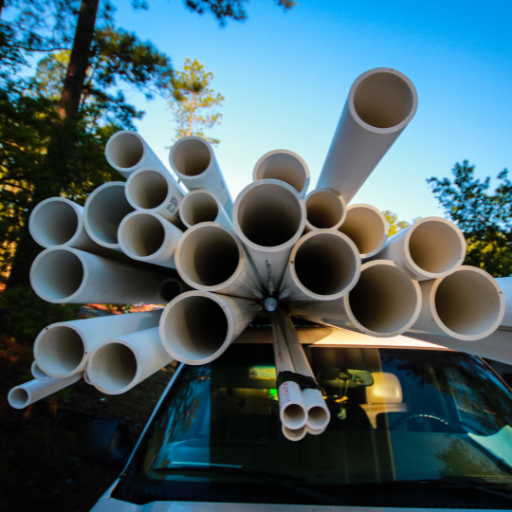
Due to their long-lasting structure and resiliency to rust, PVC pipes are useful in plumbing systems, irrigation, drainage systems, and alongside electrical workings that require the wires to be shielded.
Thanks to their ability to withstand low temperatures, ABS pipes are quite popular for use in residential and commercial drain systems. Moreover, these pipes are highly strengthened yet lightweight, making them a choice for some underground applications, thus enhancing their use cases.
Applications of ABS Plastic in Plumbing
- Drainage Systems
Plastic polyvinyl chloride (PVC) pipes are often employed for wastewater disposal systems in houses and businesses. They do not rust, which makes them useful in transporting wastewater. Further to this, there is low weight in ABS piping, which minimizes installation cost.
- Vent Systems
In plumbing, vent systems very often have ABS pipes. In such plumbing arrangements, these pipes guarantee outflow of air and consequently eliminate water traps and stinking problems.
- Sewage Systems
To make main sewer lines fitted with walls for placing pipes that have a soft outer wall, ABS plastics are also strong yet light.
- Rainwater Collection Systems
The failure resistance qualities of ABS pipe mean that it can be put to use in rainwater systems where the collection and transportation of water is easy.
- Underground Applications
For use in maintenance-free lawn sprinkler systems, ABS piping would be my material of choice. Spraying out of the dirt for irrigation, this material fights against adverse conditions like wet soil, making it the best.
- Wastewater Management
The strength of ABS plastic at both low and high temperatures makes wastewater management systems readily use it for the transport of graywater and blackwater from buildings.
- Chemical Drainage Systems
Undoubtedly, ABS is one of the best plastics for constructing chemical drains due to the numerous chemicals it can safely and efficiently dispose of in an industrial or laboratory setting.
- Retrofitting and Repairs
Some plumbing contractors prefer ABS pipes when doing retrofitting on older plumbing systems because they are easy to cut and glued together with solvent cement through and open access.
The integration of ABS pipes into plumbing systems offers both designers and contractors a dependable and economical solution for numerous projects that require great levels of longevity.
Comparing PVC vs ABS in Different Environments
As the setting where PVC and ABS pipes will be used is different, their material features, as well as the behavior of the pipes under specific conditions, have to be considered. Pipes made of polyvinyl chloride (PVC) offer the advantage of flexibility as well as temperature range; consequently, they are suitable for places that require these two factors. They are also UV resistant, so treated PVC can be used for plumbing above ground or outdoors. Rigid and impact-resistant ABS pipes are best suited for colder environments because they retain these properties even at sub-zero temperatures.
The difference between the two comes as PVC has a lower thermal resistance when compared to ABS. The latter has a higher range of maximum achievable temperature. While PVC can withstand up to 140°F, ABS can withstand approximately 180°F. The efficiency of the thermal resistance makes ABS favorable for some industries and inflexible hot water serving functions, but it is important to note that rigid PVC is more resistant against chemical degradation, particularly over long periods of time and when acidic or corrosive chemicals are involved.
Also, the noise level and durability are important considerations. In comparison to other materials, residential settings benefit the most with ABS pipes because they are quieter when water flows through them. On the other hand, ABS plastic offers remarkable strength as well as impact resistance, making it ideal for situations with heavy loads or collisions—like buried installations.
Decision-making is greatly influenced by cost as well. Even though the two options are inexpensive, pricing favors PVC. Therefore, budget-friendly projects will benefit more from purchasing PVC. Altogether, the specific application, environmental considerations, and performance requirements of the system will dictate the choice between the two materials.
Are There Environmental Considerations in Choosing ABS vs PVC?
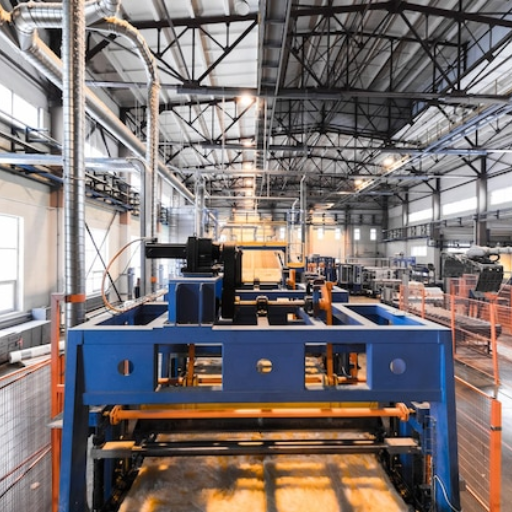
Certainly, the different types of ABS and PVC have a different impact on the environment, and that has to be factored in. PVC tends to have a less negative impact on the environment than ABS because it is more easily recyclable and can be turned into other products. While durable ABS has some applications, it is not eco-friendly due to the production carbon emissions, its recyclability, or lack thereof. Furthermore, rigid PVC tends to consume less energy during production, releasing fewer harmful byproducts than does ABS. This means that for projects that aim towards sustainability, more PVC would be used than any other plastic.
Impact of ABS and PVC Plastic on the Environment
While analyzing the environmental consequences of ABS and PVC plastics, the energy utilized during production, emissions, recyclability, and other related factors must be considered. The petroleum-based composition of ABS plastic means its manufacturing process is more energy intensive as compared to others. According to previous records, about 6.6 kg CO2 is emitted per kg of ABS produced. PVC also has some environmental impact, but not as much as ABS. PVC’s carbon emission footprint is approximately 2.7 kg CO2 per kilogram.
Another important factor is the possibility of recycling. Although PVC is one of the most commonly accepted rigid plastics for recycling and can be transformed into construction-grade materials, pipes, and various other industrial goods, ABS has very limited opportunities for recycling. Downcycling is the most common practice for ABS where plastic is turned into a product with lesser economic value due to its complex chemical makeup.
In addition, the longevity of PVC in building materials leads to lower replacement altitudes which diminishes the environmental impact. There are still some concerns about the emission of harmful chlorine-based substances during the lifecycle of PVC, especially if it is irresponsibly disposed of, demonstrating the need for advanced recycling and waste disposal systems.
When supported by systems aimed at counteracting its negative consequences, PVC can aid a project in furthering its eco-friendly goals. These industries can better align with sustainability goals by using mitigatable harmful materials. However, to be truly eco-conscious, one must comprehend the entire life cycle of resources, which informs proper decision-making.
Recycling and Disposal of ABS and PVC Pipes
Proper recycling and disposal of ABS (Acrylonitrile Butadiene Styrene) and PVC (Polyvinyl Chloride) pipes is downright critical for conserving resources and minimizing environmental impacts. It’s easier to recycle ABS due to its simpler chemical composition. Their reputation for durability and impact resistance makes them one of the go-to choices…” ABS is durable and impact resilient. It is easier to recycle than other plastics because of its simpler chemical composition” (Eldin P 2020). Their recycling is mostly shredded and pelleted from automotive parts, consumer goods, then reused into new pavements. Industry reports even claim that over 30% of regions with great recycling infrastructures recycle unused ABS.
The pipes made of polyvinyl chloride or PVC have their own unique attention. The additives like plasticizers and stabilizers,s often create problems, making reclaiming the materials difficult. Regardless, their advancements in mechanical and feedstock recycling technologies have been steadily improving PVC reevaluation. One reported reusable PVC for 7-8 cycles without major quality loss, claiming the material can be mechanically reclaimed that many times and still be deemed useful. On top of that, fresh data stating approximations of 40,000 tons of PVC being recycled annually across Europe due to the VinylPlus program initiative projects.
It is critical to prevent burning PVC for disposal because it may emit poisonous, chlorinated compounds into the atmosphere. Contained recycling, as well as other methods like chemical recycling, are essential to ensure proper disposal. There is greater collaboration between local municipalities and industries towards closed-loop recycling systems, which can greatly minimize waste and reclaim useful materials for new production cycles. These systems can reduce waste from landfills related to plastics by more than 50% in the next few years, demonstrating the need for more focus on sustainable recycling practices for landfilled ABS and PVC pipes.
Long-Term Environmental Benefits of ABS vs PVC
Evaluating the environmental consequences of ABS (Acrylonitrile Butadiene Styrene) and PVC (Polyvinyl Chloride) supports the assessment of various environmental factors like durability, recyclability, toxicity, and life cycle analyses. The durability and impact resistance of ABS pipes translates to longer useful life, resulting in fewer repairs and replacements over time, lower resource consumption, and reduced waste generation. Furthermore, ABS does not contain halogens, which means it does not release dangerous dioxins during its life cycle, giving it a better environmental profile.
The value-driven nature and general usage of PVC have made it popular within piping systems, although its impact on the environment is troubling. PVC manufacture uses chlorine and can release a soup of toxic gases during burning or heating, including hydrochloric acid, dioxins, and other air and soil poisons. There is still a long way to go toward replacing these forms of PVC, but technology has made strides toward more sustainable alternatives.
Lifecycle assessments suggest that the overall environmental footprint of ABS pipes is slightly lower than that of PVC, particularly owing to its recyclability and lower toxicity. Other studies also suggest that ABS waste is less difficult to repurpose into other industrial uses, meaning it is easier to recycle, which aligns with circular economy principles. Meanwhile, enhanced recycling processes for PVC are still under development but remain less prevalent due to technical complexities.
While evaluating these materials, construction industry stakeholders can make better decisions that promote sustainability. In infrastructure projects, switching to materials designed for durability and ecological safety is crucial. In such projects, ABS performs best with regards to long-term usefulness.
Reference Sources
- Comparative study of the mechanical behavior of polymer materials between ABS and PVC: Unfortunately, the content from this source could not be accessed.
- Investigation of standards, performance characteristics, and evaluation criteria for thermoplastic piping in residential plumbing systems: The content is available on Google Books, but it requires further navigation or access permissions to extract specific details.
- A review on the durability of PVC sewer pipes: research vs. practice. The content from this source was not fully accessible either.
4.Top ABS Plastic Pellets Suppliers in China
Frequently Asked Questions (FAQs)
Q: What’s the difference between ABS and PVC plastic pipes?
A: ABS and PVC are both popular types of plastic pipes used in plumbing. ABS is made from acrylonitrile butadiene styrene, while PVC is made from polyvinyl chloride. The biggest difference is that ABS pipes are black and require a one-step process for gluing, while PVC pipes are white and require a two-step process involving a primer and cement.
Q: Which plastic pipe is better for outdoor plumbing?
A: PVC is generally better for outdoor plumbing due to its ability to withstand direct sunlight. ABS pipes, although strong, can warp under prolonged sun exposure, making PVC the preferred choice for outdoor applications.
Q: Are there differences in the strength of ABS vs PVC plastic?
A: Yes, ABS is generally considered to have higher tensile strength compared to PVC. This means ABS can better withstand impacts and is less likely to crack under pressure.
Q: How do ABS and PVC perform in terms of sound insulation?
A: ABS plastic pipes are known to be quieter when water flows through them compared to PVC. The sound of running water is less pronounced in ABS pipes, which can be a significant factor in residential settings.
Q: Which plastic pipe is more resistant to chemicals?
A: Both ABS and PVC have good chemical resistance, but PVC is also more resistant to certain chemicals like acids and bases due to its poly vinyl chloride composition. This makes it suitable for a wider range of chemical applications.
Q: Can ABS and PVC plastic pipes be used interchangeably?
A: Although both are used in plumbing, ABS and PVC should not be used interchangeably without considering local building codes and the specific application requirements. Mixing them can lead to issues with pipe joint integrity and performance.
Q: Are PVC plastic pipes suitable for electrical insulation?
A: PVC plastic piping is often used for electrical insulation due to its excellent insulating properties. However, it’s essential to use pipes specifically designed for electrical applications to ensure safety and compliance with regulations.
Q: What are the environmental impacts of using ABS versus PVC?
A: Both ABS and PVC have environmental considerations. PVC production involves vinyl chloride monomer, which can be hazardous, while ABS is derived from fossil fuels. Recycling and proper disposal are crucial for minimizing environmental impact.
Q: How do installation processes differ between ABS and PVC plumbing pipes?
A: ABS installation is often quicker because it requires a one-step gluing process, while PVC involves a two-step process with primer and cement. This difference can impact labor time and costs during installation.
Q: What should be considered when choosing between PVC and ABS plastic pipes for plumbing?
A: Consider the specific application, environmental exposure, chemical resistance, sound insulation, and local building codes. Each material has its advantages, and the choice between them should be based on the plumbing requirements and conditions.

